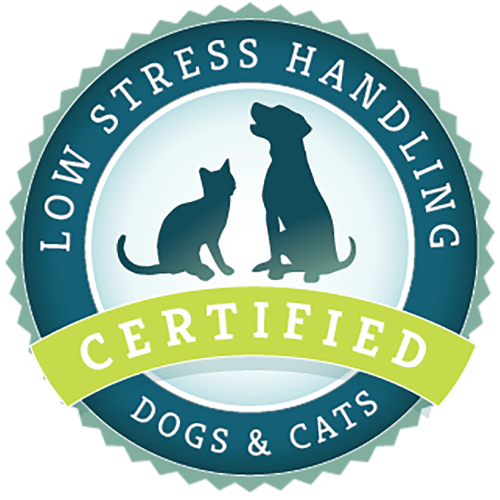What article are you looking for?
Category: Shelter Worker
Is Your Dog a Criminal or Alcoholic? Canine Rehabilitation vs Behavior Modification
“Ring! Ring!” whined the phone, “Ring! Ring!” followed by a polite, “Hello? How can I help you?” A minute of silence followed, then my assistant popped her head into my office and said, “The caller says she has a dog who needs rehabilitation and wants to know if you can help her.” “Tell her no,” I said, which took my assistant slightly aback. “I don’t deal with criminals, drug addicts, or alcoholics. But, if by chance, she wants behavior modification for a dog with some behavioral issues, then send her my way.” Okay, I know this reply sounds odd, given
How to Safely Transfer a Small Dog from Person-to-Person
Have you ever had a client walk in with their little land-shark of a Chihuahua or Toy Poodle in their arms and you needed to examine it or carry it and you know you won’t be able to get near it once the owner puts it on the table or floor? Or you have a little, bitey dog in a shelter, kennel, or hospital setting you are carrying—because somehow you’ve already made friends with him—and the safest way for you to get him to be handled or transported by someone else is by handing him off to them? In that
Dog Training is a Technical Skill: Treat Delivery Speed
Have you ever been watching professional tennis or golf on TV with a friend and then suddenly heard him blurt, “I swing just like that but that’s not where the ball goes. Those players must have special equipment that makes it work.” I’m guessing, probably not, unless your friends have mashed potatoes for brains. Most people understand that the reason professionals are able to make consistent and stellar shots is that they have skills that they build up through many hours of practice, coaching, and drills. However, when it comes to dog training or behavior modification, it’s the complete opposite. Owners
Are Head Collars on Dogs Dangerous or Safe? It’s All About Technique!
Every once in a while, when I’m doing a seminar for dog trainers, someone will ask, “Are head collars such as Gentle Leaders, Haltis and Snootloops safe for dogs to wear? Can’t a dog hurt its neck?” It’s a pretty simple question, but what some trainers really mean is, “Head collars are bad because I’ve heard they cause injury. How could you possibly use them? Dogs will run to the end and break their necks.” Or “I used one but my dog just pawed at it and didn’t like it.” Or, “I have no control with a head collar when
Was It Just a Little Bite or More? Evaluating Bite Levels in Dogs
Although aggressive behavior can be modified in a huge range of cases, behavior modification is not like fixing a clock or a television set where you make a few changes and then it’s good for another five years. Dogs are living animals and behavior is something you can never guarantee 100%.
Dealing with Difficult Dogs at the Vet: 5 Tips That Don’t Involve Food or Training Time
Veterinarians, shelter workers, and other professionals who work with dogs on a daily basis are always asking me, “If I’m dealing with a dog who can’t have treats because he’s having a procedure later in the day or because he’s not hungry, what can I do to get him to be more cooperative or to behave better?” Creating a Relaxing Environment Well, because the main reason dogs are anxious and uncooperative in the veterinary hospital and shelter situation is fear, my answer is, “It really would be helpful if you avoid scaring the poop out of the dog first.” By that, I

Low Stress Handling® Silver-Level Certification
Individual Certification at this level demonstrates to clients and employers the individual’s dedicated interest in Low Stress Handling®. Hospital Certification at this level demonstrates to clients and staff the hospital’s commitment to appropriately training staff in Low Stress Handling® methods.
Learn More
